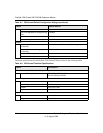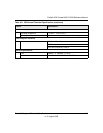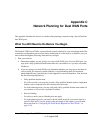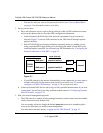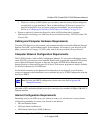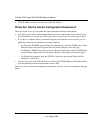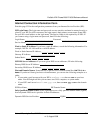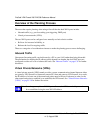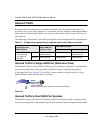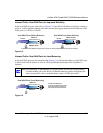
ProSafe VPN Firewall 200 FVX538 Reference Manual
C-2 Network Planning for Dual WAN Ports
v1.0, August 2006
– You can also add your own service protocols to the list (see “Services-Based Rules”
on page 4-2 for information on how to do this).
3. Set up your accounts
a. Have active Internet services such as that provided by cable or DSL broadband accounts
and locate the Internet Service Provider (ISP) configuration information.
• In this document, the WAN side of the network is presumed to be provisioned as
shown in Figure C-1with two ISPs connected to the VPN firewall through separate
physical facilities.
• Each FVX538 WAN port must be configured separately, however, whether you are
using a separate ISP for each WAN port or are having the traffic of both WAN ports
routed through the same ISP. You will need your ISP information for “Configuring the
Internet Connections to Your ISPs” on page 2-2.
• If your ISPs charge by the amount of bandwidth you use each month, you may want to
consider setting up a traffic meter to keep track of your traffic (see “To manually
configure your WAN1 ISP Settings:” on page 2-5 if you want to do this).
b. Contact a Dynamic DNS Service and set up your fully qualified domain names if you need
or want them. You will need your fully qualified domain names for “Configuring Dynamic
DNS (If Needed)” on page 2-15.
3. Plan your network management approach
• The VPN firewall is capable of being managed remotely, but this feature must be enabled
locally after each factory default reset.
You are strongly advised to change the default password password to something that is
more secure at the time you enable remote management.
You make these selections during “Logging into the VPN Firewall” on page 2-1.
Figure C-1
FVX538
ISP 1
ISP 2
Internet
WAN port 1
WAN port 2
customer premises
physical facility 1
physical facility 2
route diversity
firewall





